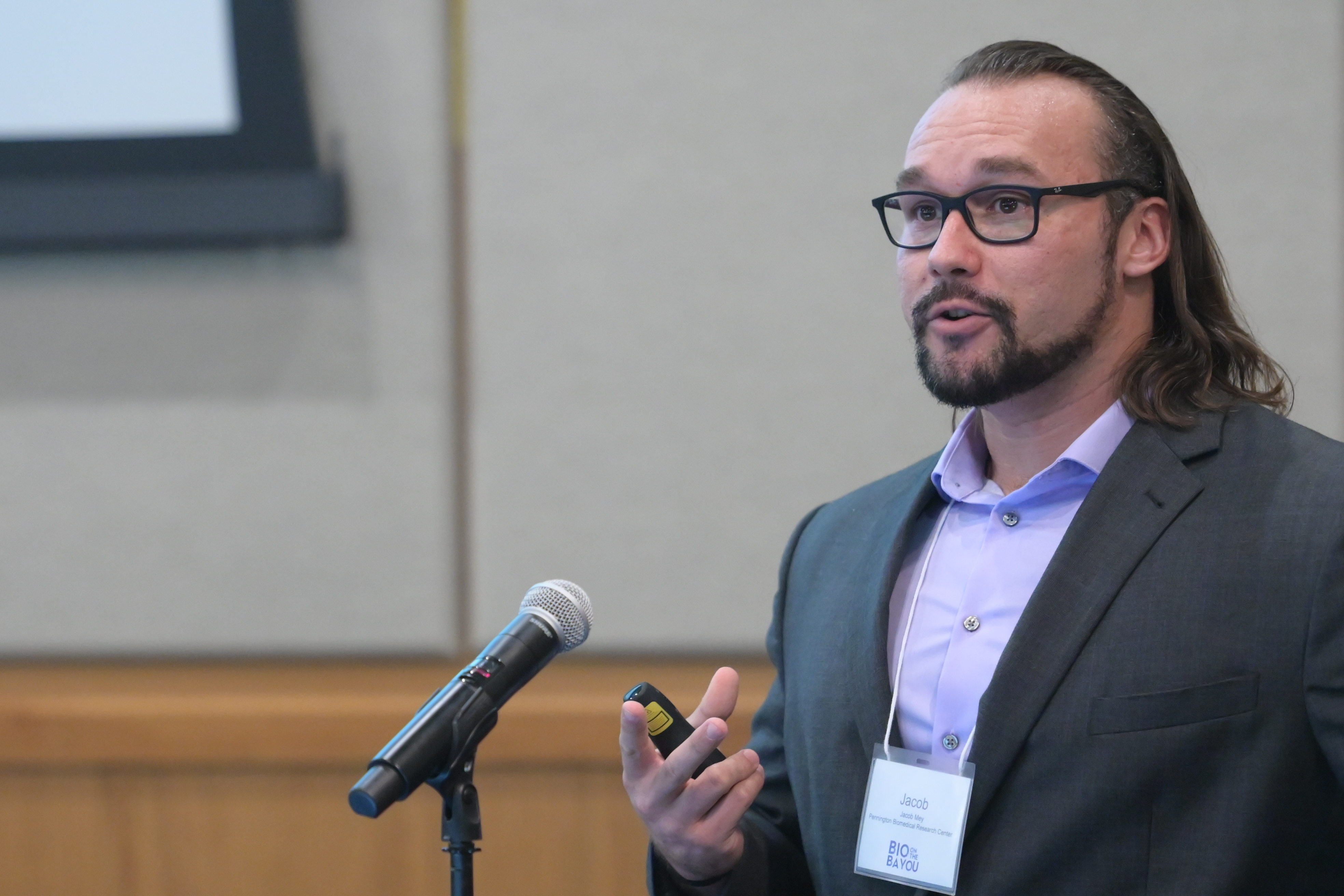Ways to Avoid Post-Thanksgiving Drowsiness with Dr. Jacob Mey
For more information, contact Ernie Ballard, ernie.ballard@pbrc.edu, 225-763-2677

What exactly is tryptophan?
Tryptophan is an essential amino acid. It's in the majority of protein foods you eat. It's a building block to proteins, and your body uses it for a bunch of different processes.
One of the things your body uses tryptophan for is creating melatonin and serotonin, two agents that promote sleepiness so that's why turkey gets the bad rap. But tryptophan is in a lot of other protein foods as well, like tuna or chicken or even steak. And those foods don't get the same bad rap that turkey does.
Besides tryptophan, what else can cause us to feel sleepy after eating?
There's a lot of items that go along with Thanksgiving, especially food related, that cause us to be sleepy, like overeating. When you eat a lot of foods, especially large volumes of carbohydrates like we have in our sweet potatoes or our stuffing – and certainly all of our desserts – that causes a large increase in blood sugar. And then, what does your body do when it sees that? It releases insulin, and then you have a fast decrease in blood sugar, and that can cause sleepiness.
Certainly, other items that are consumed with your Thanksgiving dinner, like alcohol, can cause drowsiness and sleepiness as well. So, all of these together really create the environment for sleepiness.
What are some tips you would give to help alleviate drowsiness after your Thanksgiving meal?
One of the things you can do is practice eating mindfully, or just slow down your eating habits. A great, simple way to do this is to put down your fork between every bite and have a conversation with all the wonderful friends and family that you have at your dinner table.
Another item that you can do to reduce the post-meal sleepiness of Thanksgiving is to move for about 10 minutes after your meal. I'm not saying you have to go run a mile but just having a brisk walk for about 10 minutes can significantly reduce that post-meal glucose or blood sugar spike. And that can maybe help you with your energy levels afterwards as well.
Dr. Mey runs the Mitochondrial Energetics and Nutrient Utilization, or MENU, laboratory at Pennington Biomedical. His research uses clinical-translational approaches to understand how the food we eat (our “MENU”) affects health and disease through impacting cellular mitochondrial energetics and whole-body nutrient utilization. His recent interests target asthma and other pulmonary diseases, where he is investigating the therapeutic potential of shifting fuel utilization towards ketones.
About the Pennington Biomedical Research Center
The Pennington Biomedical Research Center is at the forefront of medical discovery
as it relates to understanding the triggers of obesity, diabetes, cardiovascular disease,
cancer and dementia. Pennington Biomedical has the vision to lead the world in promoting
metabolic health and eliminating metabolic disease through scientific discoveries
that create solutions from cells to society. The Center conducts basic, clinical,
and population research, and is affiliated with LSU.
The research enterprise at Pennington Biomedical includes over 480 employees within a network of 40 clinics and research laboratories, and 13 highly specialized core service facilities. Its scientists and physician/scientists are supported by research trainees, lab technicians, nurses, dietitians, and other support personnel. Pennington Biomedical a state-of-the-art research facility on a 222-acre campus in Baton Rouge.
For more information, see www.pbrc.edu.


